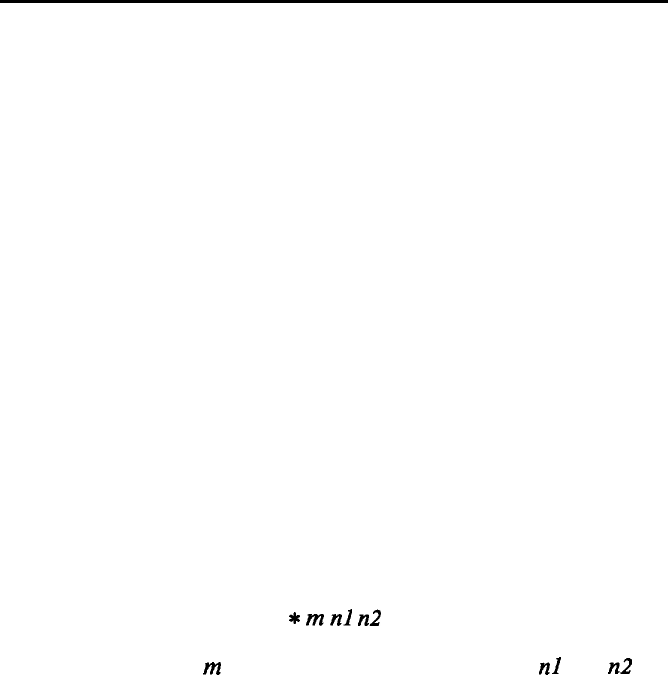
Graphics
Since there are 24 pins in each column, you must make a
calculation for each of the three sections in each column. As you
can see, this method of planning and printing dot graphics requires
considerable calculation. Because triple-density uses 180 columns per
inch, printing a single line of triple-density graphics only one inch
long requires 540 numbers. Fortunately, commercial software can
do the calculations for you.
Before you can put these numbers in a graphics program,
however, you need to know the format of the graphics command.
The graphics command
The graphics mode command is quite different from the other
commands used by the LQ. For most of the other LQ modes, such
as emphasized and double-wide, one escape code turns the mode on
and another turns it off. For graphics, the command is more
complicated because the code that turns on a graphics mode also
specifies how many columns it will use. After the LQ receives this
code, it interprets the next numbers as pin patterns and prints them
on the paper.
The LQ has one command that allows you to use any of the 11
graphics options. The format of the command is:
ESC
*
m
nl
n2
data
In this command,
m
selects the graphics option and
nl
and
n2
specify the number of columns to reserve for graphics. The
available graphics options are listed on the next page.
4-12


















